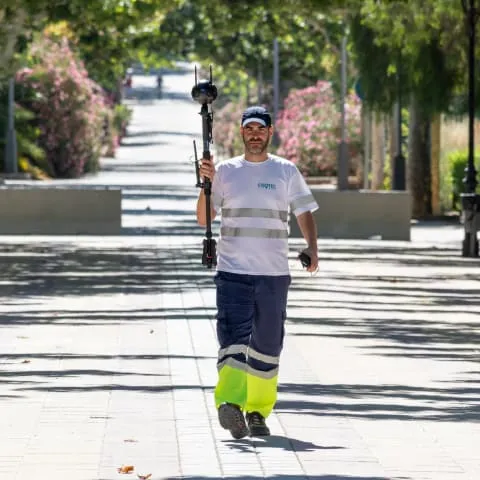
5 facts you didn’t know about the use of digital cufflinks
Digital twins are an emerging technology that is revolutionising the way companies design, build and operate their products and services. And not only companies, because public administrations are also taking steps to incorporate the use of digital twins in the management of urban environments, to make them much more comfortable, safe and sustainable spaces. While most people have heard of digital twins, there are some unknown facts worth mentioning. In this article, we will explore five of them. Will you join us?
Digital twins are not new
Although the technology behind digital twins has advanced significantly in recent decades, the concept itself is not new. Digital twins originated at NASA in the 1970s, where they were used to simulate and optimise the performance of space shuttles. Did you know?
Digital twins can reduce time to market
Digital twins allow companies to simulate and test products and services before they are physically built. This can significantly reduce the time needed to bring a product to market and also reduces production and testing costs.
Digital twins can improve process efficiency
By creating an accurate digital representation of a product or process, digital twins allow companies to identify and correct bottlenecks and other problems before they occur in the real world. This can improve efficiency and reduce production costs.
Digital twins can improve urban safety
Digital twins are proving to be a powerful tool for improving security in cities. By creating an accurate digital representation of the city’s infrastructure and its environment, digital twins allow city authorities to simulate different scenarios and assess potential security risks.
For example, a digital twin of a traffic intersection can help city authorities identify potential safety issues, such as traffic congestion or blind spots in visibility. By simulating different traffic situations, digital twins can help authorities determine what measures are needed to improve safety, such as adding additional traffic signals or modifying the geometry of the intersection. Ultimately, digital twins can help city authorities make more informed and effective decisions to improve safety on city streets.
Digital twins are driving energy savings in smart cities
Digital twins can also be a valuable tool for improving energy savings in smart cities. By creating an accurate digital representation of the city’s buildings, infrastructure and energy systems, digital twins allow city managers to simulate and evaluate different energy saving strategies.
For example, a digital twin of a building can help city managers identify areas of energy inefficiency and simulate different changes in lighting, HVAC and other energy systems to determine the optimal energy-saving strategy. In addition, digital twins of city infrastructure can help city managers identify areas of traffic congestion, which can lead to increased energy inefficiency, and simulate different traffic management strategies to reduce energy consumption in the city. In short, digital twins are a powerful tool to help smart cities improve energy savings and move towards a more sustainable future.
Fisotec projects in construction and urban services using digital twins
Some of the projects in which the Fisotec team is immersed have found the use of digital twins to be an effective and versatile tool.
One example is the town hall of Doñinos, in Salamanca. There, at building level, we are working on the generation of digital models for the proposal of solutions that favour energy savings in buildings, for which we have generated a complete digital BIM model.
Or the case of the General Treasury of the Social Security in Almeria. After being awarded the contract for the BIM modelling of a total of 13 municipal buildings, Fisotec’s work will be aimed at verifying the state of the buildings, from the point of view of surface evaluation, as well as laying the foundations for the planning of constructive actions in a concrete manner on the different buildings.
All this, thanks to the BLK2GO equipment, framed within our Smart inventory format, with which we are achieving an agile, fast and accurate capture of the point cloud of the aforementioned properties, so that our technical teams can carry out an accurate modelling of them.
